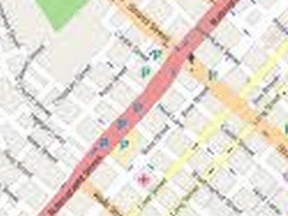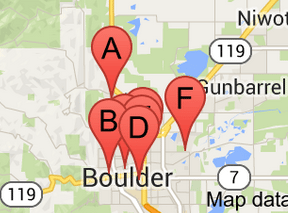Online retailers are finding the “bricks-and-clicks” strategy to be an effective way to serve and engage shoppers. Perhaps that is why an increasing number of ecommerce merchants — Bonobos, Birchbox, and Warby Parker, to name three — are setting up shop offline.
It’s important to note, however, that a bricks-and-clicks business isn’t just about having a physical store and an ecommerce site. For this model to be effective, each channel must complement and add value to the other.
This article will present four guidelines to execute a bricks-and-clicks strategy.

Birchbox, the accessories and grooming retailer, is opening physical locations, in addition to its ecommerce site.
Use Online Data for Offline Selling, and Vice Versa
Data pertaining to online sales and traffic won’t just help you optimize your ecommerce site. It can also apply to offline decisions. For instance, if you see an increase in sales for a particular product on your website, you should consider promoting it offline, as well, to your brick-and-mortar shoppers.
Also pay attention to social media data such as Facebook likes and Pinterest pins. What’s trending on social sites can help with merchandising and marketing. Nordstrom, for example, uses Pinterest to help decide what products to display in its stores. The retailer developed an in-store app for its associates that matches top pins with each store’s inventory, so the staff can display and promote the items accordingly.
Consider something similar in your brick-and-mortar business. Take note of the most liked, viewed, and pinned items online and then leverage that information when making decisions regarding product displays, inventory, and more.
You can also use offline information to enhance your ecommerce site. Utilize in-store analytics tools, such as people counters and sensors, to better understand how your offline customers behave and then compare that with online behavioral data to spot patterns and opportunities.
Qualitative information, such as shoppers’ common questions and concerns, can also be used to improve your online shop. For instance, if your physical store associates keep getting the same questions about a particular product, there’s a good chance that online shoppers have similar queries. So you may want to include the answer in that item’s product description page.
Allow Access to Online Account Information in Physical Store
Bridge the gap between bricks and clicks by giving your customers and physical-store staff access to online account information. Doing so can enhance shopping experiences and drive sales.
Consider Burberry, the fashion retailer. Burberry arms its store associates with iPads so they can pull up shoppers’ account data and purchase history while they’re inside the store. This enables associates to make more relevant product recommendations or even make purchases for a customer if a particular item isn’t in stock.
Sephora, the cosmetics retailer, is doing something similar through its mobile app, which lets users view and manage their account information — including previous purchases, wish lists, rewards, and more — using their smartphones. They can then use the app while inside the store, to find the items they need.
Use Smartphone Beacons in Physical Stores
Beacons are Bluetooth-enabled devices that let brick-and-mortar merchants send customized offers and recommendations to their shoppers via their smartphones — based on where the shoppers are in the store. For example, if a shopper is in the footwear department, the retailer can use its store beacons to send the shopper a coupon for shoes.
Bricks-and-clicks businesses can also use the technology to send tailored offers to shoppers based on their online behavior. Macy’s, for instance, keeps track of the items that customers liked (Facebook) on its website and then sends alerts whenever shoppers are in a Macy’s branch that carries those products.
Integrate Online and Offline Inventory, Fulfillment
Offer click-and-collect services that allow shoppers to buy merchandise online and pick it up at a local retail branch or service station. Many consumers would rather forgo the shipping costs and wait time and instead pick up their items at a time and place that’s convenient for them.
Also, use your brick-and-mortar inventory when an item is out of stock online. Oasis, an apparel retailer, is an example of this. When an item is sold out online, Oasis will conduct a search for the product in its brick-and-mortar locations and ship it from there. Note that this service works both ways. If an item is unavailable in the physical store, an Oasis associate can order it online for the customer and ship it to her.




